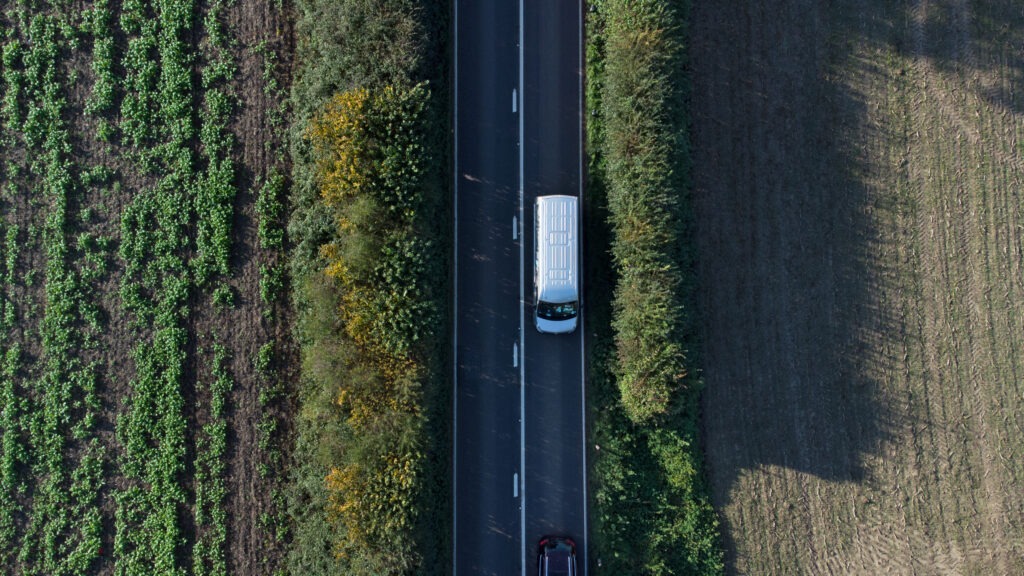Full year of growth in UK new-car market as recovery continues in July
07 August 2023

The UK secured another month of registration growth in July. This amounts to a full year of improvements as the market continues to recover from the challenges of the last few years.
Data released by the Society of Motor Manufacturers and Traders (SMMT) shows that 143,921 passenger cars were registered last month, an increase of 28.3% year on year. This was the best July performance since 2020, when dealerships were able to open and deliveries resumed following the first COVID-19 lockdown.
While the numbers give cause for optimism, they are being compared to a particularly poor run of registrations last year, as a result of the supply-chain crisis, economic woes and political impacts. This chain of poor performances came to an end in August 2022, when supply bottlenecks started to ease and vehicle deliveries were made.
August is usually a quiet month for registrations, but a plate change in September often boosts sales in anticipation of deliveries. Therefore, the market recovery will likely continue for a while, although perhaps not at the level seen so far this year. It is also worth noting that July’s figures are down 8.4% compared to 2019, before COVID-19 impacted the automotive industry.
So far this year, 1,093,641 cars have been registered in the UK, a rise of 19.6% over the first seven months of 2022. However, these figures are 23.4% down compared to the same period in 2019.
Gone in 60 seconds
The SMMT’s data shows that electrified vehicles, consisting of hybrids (HEVs), plug-in hybrids (PHEVs) and battery-electric vehicles (BEVs) made up 35.4% of the market last month. This is an increase on the 29% share held in July 2022, indicating an appetite for the different powertrain types on offer.
BEVs remain the second-most-popular powertrain in the UK, with July’s figures further cementing their position. Registrations increased by 87.9%, with 23,010 all-electric units taking to the roads. This meant a 16% market share, in line with what has been seen so far this year (16.1% year to date).
According to the SMMT, a new BEV was registered every 60 seconds during the month. According to the organisation’s latest outlook, this will accelerate to one every 50 seconds by the end of the year, and up to one every 40 seconds by the end of 2024.
PHEVs also experienced a significant increase in registrations, for the second month in a row. The technology has struggled as of late, as buyers move away from what is often seen as a bridging technology, yet July saw figures rise 79.1% with 11,702 units delivered. This gave the powertrain an 8.1% market share, up 2.3%. Its year-to-date share had a more modest increase, up to 6.8% overall.
HEV registrations also increased, with 16,321 units representing a growth of 18.9%. However, their market share in July fell to 11.3%, a casualty of the success of BEVs and PHEVs. Over the year, HEVs have taken 12.4% of the market, up 0.9% over the first seven months of 2022.
Petrol led the way, improving registrations by 23.2% when including mild hybrids. This gave the fuel type a 56.8% market share, a seemingly dominant position in the UK new-car marketplace. However, this share has declined by 2.3% compared to July 2022, as competition from electrified vehicles increases. Year to date, petrol maintained its market share (58.6%), and although this is down on 2022, it is only by a modest 0.8% across seven months.
Finally, diesel maintained its downward spiral, with registrations of the fuel type falling 16.3%, when including mild hybrids. This translates into a 7.7% market share, down 4.2% in the month.
More needed to build BEV market
The private BEV market is struggling, with registrations in this sector down by 10.5%, the SMMT stated in a conference call to discuss the current numbers. The technology is still expensive to purchase outright, and with the cost-of-living crisis continuing, alongside a drop in petrol and diesel prices and a rise in electricity costs, it seems private buyers are being put off the investment. The loss of incentives for purchasing BEVs has also not helped. Growth was driven by the fleet sector, with registrations up 72.2% in the month.
To meet ambitious but necessary environmental targets, the overall growth of BEVs must move faster. The SMMT believes this can be done with the right support, including financial incentives, purchase reassurance and ensuring drivers are confident in driving and charging, sustainably and affordably.
A record high of 3,056 new standard public chargers were installed in July, equal to one new charger for every 35 plug-in vehicles registered. This is a significant improvement on the one for every 58 cars ratio recorded in the same month last year.
However, as the government, charge point operators and the automotive industry agree, reassuring drivers requires building ahead of need. The SMMT states that to reach the government’s minimum target of 300,000 charge points by 2030, the installation rate must treble to almost 10,000 chargers per quarter, every quarter. This can only be achieved if obstacles to installation, such as out-of-date planning regulations and access to grids, are overcome.
‘The industry remains committed to meeting the UK’s zero-emission deadlines and continues to make the investments to get us there,’ commented Mike Hawes, SMMT chief executive. ‘Choice and innovation in the market are growing, so it is encouraging to see more people switching on to the benefits of driving electric.
‘With inflation, rising costs of living and a zero-emission vehicle mandate that will dictate the market coming next year, however, consumers must be given every possible incentive to buy. The UK Government must pull every lever, therefore, to make buying, running and, especially, charging an EV affordable and practical for every driver in every part of the country,’ he added.
Looking ahead
The SMMT forecasts that registrations will reach roughly 1.85 million in 2023, an increase of 14.4% on the 2022 total. BEV registrations are expected to rise by 23.4% with 330,000 units taking to roads, a market share of 17.8%.
In 2024, the industry body expects a 5.6% rise in registrations, with BEVs improving by 33.6%, taking a market share of 22.6%. However, there is a potential challenge to this improvement through Rules of Origin, with a new target coming into force from 1 January 2024.
From this date, 45% of a BEV’s value must be locally sourced, with 50% of the battery value needing to come from local components to be classed as a domestic item. If these targets are not met, a 10% import tariff will be applied per vehicle, increasing the price of a BEV even further.



